Recent Posts
-
Real Crimes and the Coming Violence
September 6, 2025
-
Whither Modern Life?
June 27, 2025
-
What the Hell
June 18, 2025
-
As Darkness Engulfs Us
April 6, 2025
-
AI, Risk, and Work
January 17, 2025
-
“Things Are in the Saddle, and Ride Mankind”
December 29, 2024
-
Forgotten Futures in Seattle
December 12, 2024
-
Autocracy Defeats Neoliberalism
November 14, 2024
-
History… We’re Soaking in It!
October 2, 2024
-
A Numbing Spectacle
September 22, 2024
|
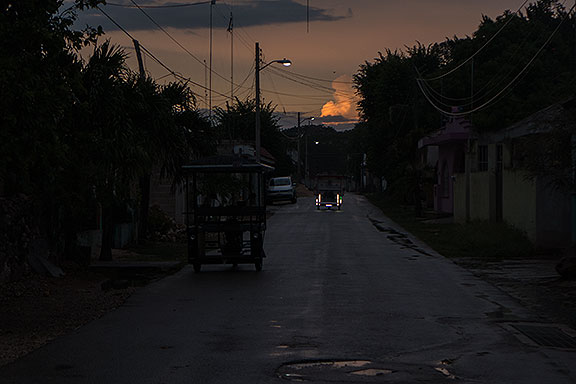 Moto-trikes at sunset after big tropical downpour, Teabo, Yucatan, Mexico. Sitting in Mérida, Yucatan, munching on the irresistible marzipan candies that are available everywhere here. Came down for a family wedding, and stayed to join a community delegation to support the Luis Gongora Pat family in their efforts to generate local awareness about the case, and hoping to pressure the Mexican government to, in turn, pressure the U.S. and San Francisco District Attorney to prosecute the police who murdered Luis on Shotwell Street about 4 months ago. On November 1st, we travelled to celebrate the Hanal Pixán festival, feast for the spirits as part of the Day of the Dead days. November 2nd is Day of the Dead, or All Soul’s Day.
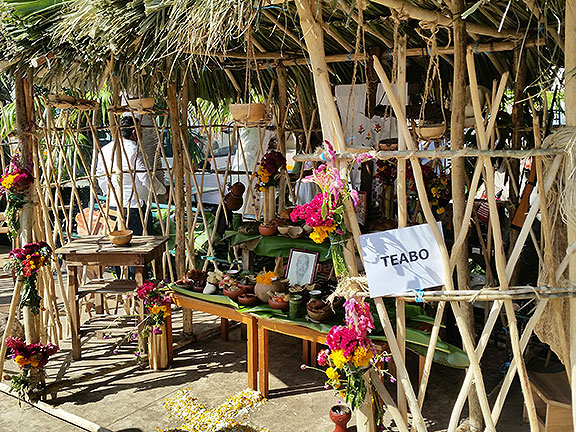 The town of Teabo put up an altar in Mérida’s central square for the Hanal Pixán celebration  Dozens of altars filled the square, many of them with labels in Mayan to help celebrants learn how things are named. I should quickly note that I haven’t written much lately and haven’t posted a thing since the end of my summer in Mexico City. Why, my millions of readers want to know? Well, returning to San Francisco turned out to be more jarring than I had previously experienced, or ever would have expected. I felt pretty dislocated from my own life for more than a month before getting back in the flow.
I know perfectly well that the soul of the city has been draining away. It’s like someone pulled the plug a few years ago and now the bathtub is practically empty, the last murky waters circling the drain as we see what made many of us feel so strongly about San Francisco disappear in the last swirls into the void. It was also true that I loved being in Mexico City, a big vibrant city with lots of history and countless places to explore. And finally I was beginning to enjoy some real communication in Spanish after being blocked by my shame at bad speaking for so many years. Returning to SF from Mexico City was a bit of a letdown, given that San Francisco is very small and relatively provincial compared to a true world city, and its history that I know so well pales in comparison to places like Mexico City or other places with centuries behind them. (Not that I don’t still love local history, I do. And I’m fully engaged with Shaping San Francisco to this day and have no plans to stop.)
I also returned to the quadrennial madness that passes for democracy here. It’s a completely shameful spectacle that has so little to do with what we are actually facing, whether locally, statewide, nationally, or internationally. I inevitably find it terribly depressing to see so many of my intelligent friends become unhinged on cue during this process of mass hysteria known as the Presidential election. Spare me the lectures about how awful Trump is. I know. Or how awful Clinton is, I know. Or how the differences between them are SO important. There have certainly been some artfully concocted campaigns to create that impression. And I generally believe there are much greater differences between these two than we’ve seen in past elections, and that a Trump victory would (and to some extent already has) “unleash the beast in White America,” as a KPFA commentator put it a month ago. But I also still think that even though the narcissistic windbag has blown up the GOP with his campaign, there is a tight consensus in the American ruling class about the role of the U.S. military in world affairs, the inviolability of private property and wage-labor, and the basic structure of life that has benefited their class so handsomely. Neither candidate is going to challenge the hegemony of banks, oil, or the war economy. Neither candidate is going to address climate change, dismantle the car-centric physical structure of life, reorganize the plumbing in every house to accommodate gray water and composting, develop urban organic agriculture as an alternative to the endless proliferation of bullshit jobs, or replace the absurdity of GNP and endless growth with a new logic based on a good life for all, a stable state circular economy, and less work! My idea of what is necessary and urgent doesn’t even enter the conversation. And it depresses me deeply to realize that what I’m arguing for is considered so far beyond the pale that it is simply laughed away as improbably unrealistic. I’d say my very scratch-the-surface list above is much closer to a basic realism than any of the capitalist utopians promising a better future based on the broken logic of the ways things are.
 Teabo, Yucatan, outskirts. The term “Pueblo Biciclitero” is used derogatorily against small towns in Mexico to indicate their backwardness… but in the Yucatan a huge number of people use bicycles regularly and it is clear evidence of an advanced way of living! Anyway, I came to Mexico for a week, and it’s a relief to get away from the incessant yammering and overwhelming tidal wave of bullshit that passes for democratic debate in the United States. If this isn’t evidence of a collapsing society I don’t know what is!
Yesterday I had the honor of accompanying Adriana, along with Tiny of Poor Magazine and her son Tiburcio, to the town of Teabo, about an hour and a half southeast of Mérida, the hometown of Luis Gongora Pat, and his brothers and cousins and their extended families that we’ve come to know in San Francisco. We were greeted by Luis’s daughter Rossana, his niece Viki and his cousin Teresa who brought us to the family home a couple of blocks from the church in the central plaza. There we met the parents, wife, sisters-in-law, nieces, nephews and grandkids, a lovely and resilient group in which the women stand tall and are clearly the pillars of family life here, with the men away working in the US and Merida… and Luis killed.
Continue reading Dislocations Near and Far
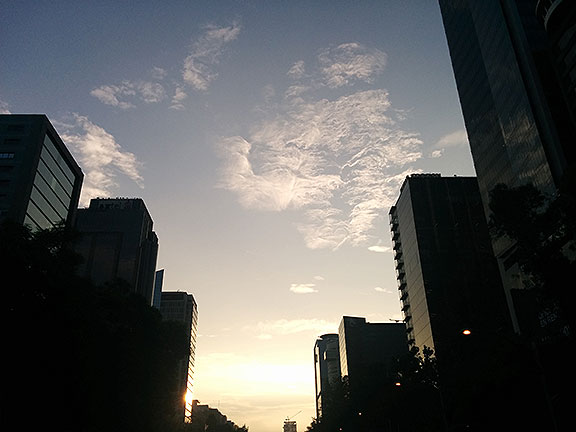 Many mornings I left from the hotel and walked across Paseo de la Reforma just after dawn… Sitting in the airport getting ready to leave Mexico City after seven weeks here. What a great time! I came to take a Spanish class at the UNAM, actually in the Centro de Enseñanza Para Extranjeros (CEPE) which I highly recommend. I was placed in Básico 4, and I think that was exactly right. I ended up with 93/100 on the final exam, good here for a B+ (shocking to Americans used to our extremely lax grading standards, where anything over 85 gets an A). The grade was of no importance of course, but the test helped me know if I’d gotten anywhere during the 6 weeks of 3 hours per day classes. Apparently yes!
I certainly feel like I can speak and understand much better than earlier, and now the task is to keep it alive and growing at home. I’ll actually have to have some real discipline, dedicating at least an hour a day to reading Spanish language books, newspapers, or websites, as I’ve been doing all summer. And speaking much more when I’m among Spanish speakers, not uncommon in our daily life in San Francisco. Finally I think I’ve put away the horrible shame I was trapped by when it came to speaking another language. We’ll see.
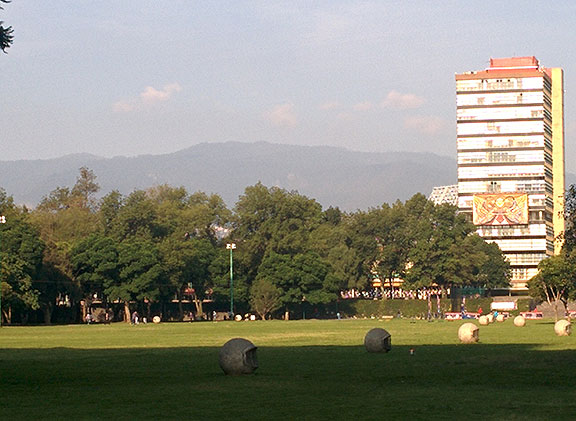 Early morning on the UNAM campus. 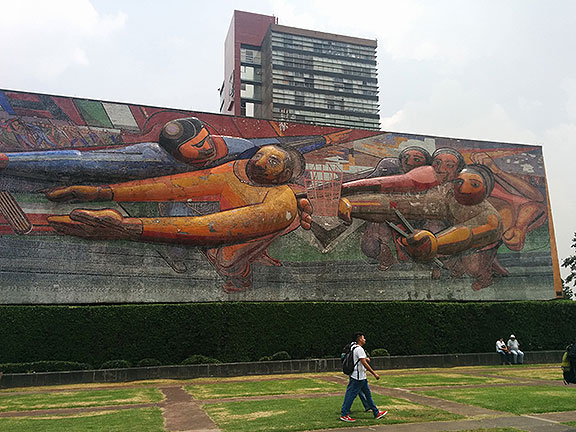 Prominent murals by David Alfaro Siquieros on the campus. 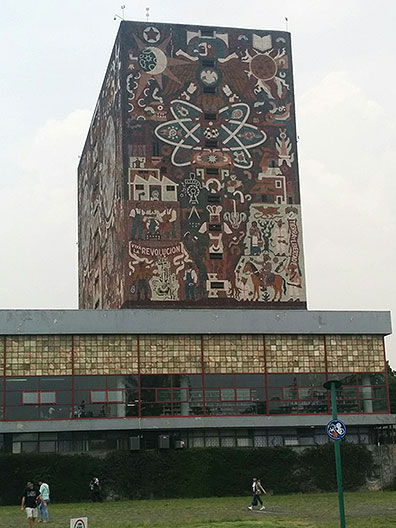 The famous mosaic murals made entirely of natural stone except the blue, which is glass, covering the 1950s UNAM library. Spending nearly two months in one of the world’s greatest cities has been an incredible thrill apart from the enjoyable success with the language. Mexico City, famous for its horrendous traffic, air quality, and water problems, is still one of my favorite cities. There are so many gorgeous parks, tree-lined boulevards, neighborhoods of all sorts sporting fantastic architecture from many eras, more museums than any other city, and of course the food! The food here is off the hook. You can indulge in fantastic street food practically any time, and the enormous range of restaurants and bars makes every meal a treat, often accompanied by live music. This place is a cultural powerhouse, and it’s so vast that I barely scratched the surface. But I did manage to get to know a few neighborhoods pretty well, and according to my phone app that is monitoring my walks, I walked over 260 miles since July 1!!
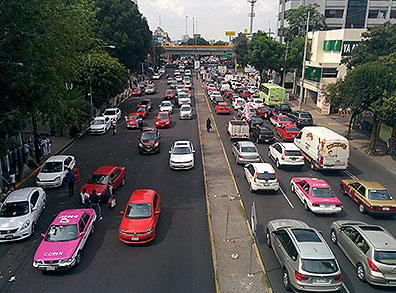 You can’t go anywhere in Mexico City without running into traffic jams and gridlock. 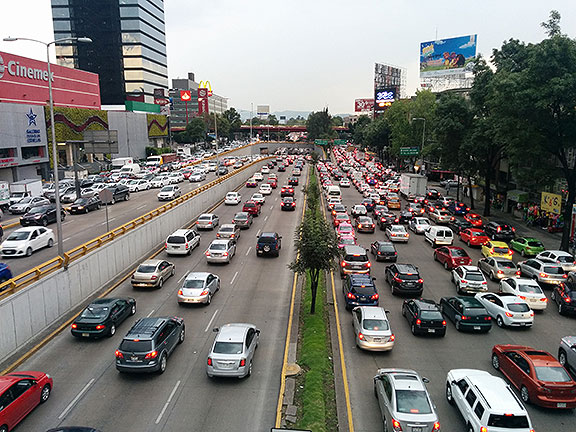 I spent some of my time reading “The Interior Circuit” by Francisco Goldman (this is a photo of it, a circular freeway around the city), first in English and then in Spanish after I left it on the plane! 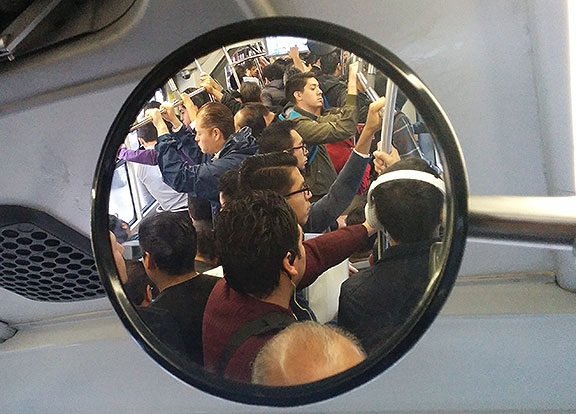 I took this photo inside a morning commute on the Metrobus, shooting into the mirror that looked up towards the front of the articulated vehicle. Having a daily routine where I had to make my way from the city center to the campus at “Ciudad Universitaria” far to the south was a great way to integrate into daily life here. During one of my last rides crushed in a Metrobus, always amazingly overcrowded just like the underground Metro is too, at least anywhere near commute hours, I found myself feeling this great affection for everyone around me. I suppose that when you are pressed together day in and day out, there’s a certain intimacy and shared tolerance that we all have to cultivate, and it left me feeling a weird kind of love. I don’t know if that happens to folks here but there’s no question that Mexican culture is far more polite and generally indirect than most places. I retained a sense of wonder at my daily experiences, and never really felt close to be a “chilango” (a local Mexico City person), but I did feel that I shared the daily life here for this time, and I loved it.
Continue reading Summer in Mexico City!
I was very surprised when about two weeks ago an editor of the op/ed pages of the New York Times sent me an email asking if I’d write an editorial. The topic was supposed to be how the anti-trade politics of both Sanders and Trump were wrong, and that I should endeavor to write something akin to a “wobbly” (IWW) perspective about why internationalism was a good thing and that somehow the anti-trade politics were missing this… or something like that! I told them I couldn’t do that, but I had things to say about this political moment and they wouldn’t find it predictable. The editor, who once wrote a review of Processed World, encouraged me to proceed and I sent in a draft, which he edited and pitched to his editorial group. Unsurprisingly they turned it down. So I sent it over to The Guardian in case they might be interested, but they didn’t want it either. So here it is! With a variety of photos from the past two months in Mexico City. More to come shortly on Mexico and the teachers’ movement and my many wonderful experiences here.
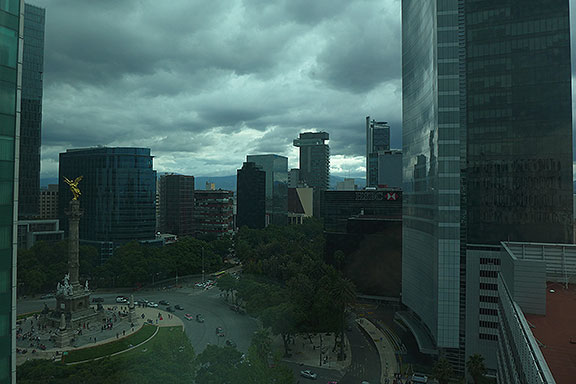 Hilariously I got to stay in the Sheraton near the Angel de la Independencia for some time… constant amazing views of the stormy evening clouds and the crazy mix of quinceanaras and political protests at the monument. Neoliberalism and Populism: Is That All There Is?
There are stark differences in personality and political style between Clinton and Trump, and most people who vote will choose one or the other. But millions of thoughtful people, probably a large majority, feel shut out, left to ponder how we might reorganize the way we live, from the bottom up.
For decades, there has been a mainstream neoliberal consensus, which holds that global trade is good and markets are more efficient than governments at meeting human needs. With the choice limited to centrist Democrats like Obama and the Clintons or ever more right-wing Republicans from Reagan to G.W. Bush, there has been no room for a critical alternative to the assumptions that government’s overriding priority is to facilitate the success of corporations and that the U.S. military should be used to police the world on their behalf.
Neoliberalism — a term widely used around the world, though less so in the United States — is an ideology Margaret Thatcher summed up in the early 1980s as “There is no alternative” to market forces. The reality that a tiny few have grown incomprehensibly wealthy while millions live at the edge of losing everything and millions more are in dire poverty (in the U.S. and the rest of the world) is dismissed as unimportant by the proponents of capitalist globalization. They continue to insist that the rigged game they’re playing will eventually benefit everyone, all evidence to the contrary notwithstanding.
A government dominated by millionaires, who fill most seats in the Senate and many in the House, has eroded belief in the system. This simmering rage against the corrupt and the rich found its voice during this election campaign. Both Sanders and Trump hammered at the trade deals that have been the cornerstone of global neoliberalism. Sanders managed to force Clinton to repudiate the TransPacific Partnership (TPP), though everyone knows that if she is elected, she will continue the Obama administration’s embrace of international trade pacts. Trump has upended the Republican establishment and their support for corporate freedom from government regulation nationally and internationally. No one can predict what he would actually do if he is elected, but he has put opposition to trade agreements like the TPP or NAFTA at the center of his campaign.
This nationalist economic rhetoric, which includes on the right the scapegoating of immigrant workers, has a long and sordid history. It is not surprising that a right-wing demagogue could find support by tapping into this century-old wellspring of animosity and resentment, used again and again to divide workers from one another. Even Cesar Chavez’s United Farmworkers Union, still revered by people on the left who support unions, scapegoated immigrant workers and engaged in their own border patrols to stop them in the early 1970s.
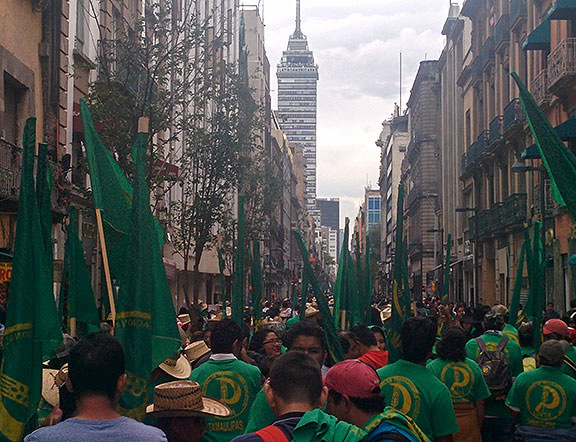 One hundred thousand farmworkers gathered in the center of Mexico City a week ago to demand resources and policy changes from the government. Few remember now that, 17 years ago, it was the left-wing critique of trade deals that originally united the “Teamsters and turtles” in Seattle to halt the World Trade Organization talks in 1999. The common argument of organized labor then demanded “fair trade” rather than “free trade,” but many of us went to Seattle to reject that simplistic choice. The Committee for Full Enjoyment (not Full Employment) argued for “Life Not Trade!”
The anti-globalization movement with its cacophony of critical ideas and demands appeared many times in the years since, from the IMF/World Bank meetings in Washington DC in 2000, to the violent confrontations in Genoa, Italy in 2001, to a whole series of G-8 and other “summits” that faced major social resistance in Sweden, Quebec, Germany, Thailand, Miami and so on. The movement had deep roots in the Zapatista rebellion against NAFTA in Mexico in 1994, as well as uprisings in dozens of countries against IMF-imposed “structural adjustment programs” — the privatization of public works and public services, according to the neoliberal “Washington Consensus.”
Unlike mainstream unions (which usually avoided these protests) the anti- or alter-globalization movement didn’t reject internationalism; the World Social Forum emerged from it as a rejoinder to the elite’s annual gathering in Davos, Switzerland under the rubric of a World Economic Forum. The World Social Forum, which convened in Montreal, Canada last week, is a regular global meeting of movements focused on defining and constructing real alternatives to the way we live today. This process of knitting together global networks committed to a post-capitalist future has held its own summits in Brazil, India, Kenya, Mali, Venezuela, Pakistan, and Tunisia, but has fallen far short of everyone’s most cherished hopes.
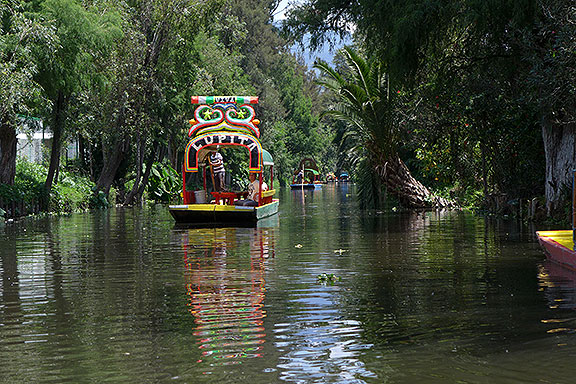 Spent a fun afternoon with my classmates and other friends visiting Xochilmilco, the famous waterways south of the city. 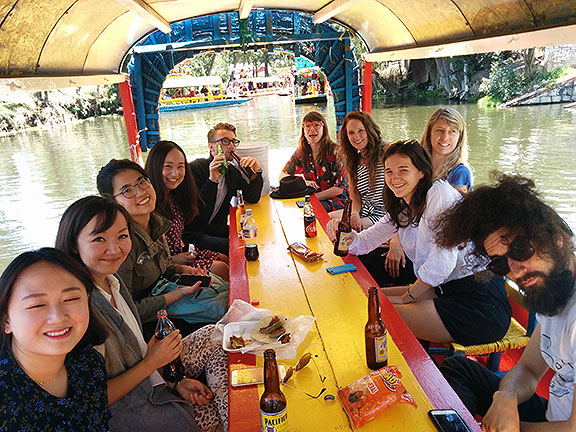 Classmates and friends and more!  We even hired a mariachi band for a tune! 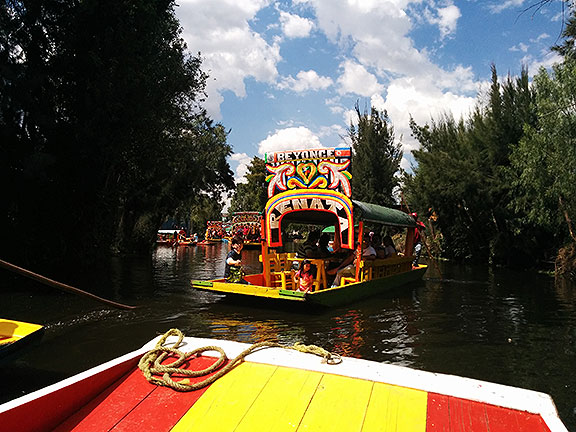 It was a gorgeous afternoon. Where can we look for change? Not in the form of mass organizations or political parties that contest directly for state power (though halting efforts towards this have emerged in Spain and Greece for example), but perhaps in the decentralized network of social movements that are difficult to recognize as such. One example would be the myriad groups trying to address the catastrophic ecological predicament we’ve put ourselves in. Jonathan Schell, writing in The Unconquerable World more than a decade ago, suggested that there were about 30 million such organizations worldwide.
Activists like these share some key characteristics. Many people are taking their time and technological know-how out of the market place and engaging in useful, practical projects to improve lives in the here and now. People want an alternative to just surviving on flat wages and with inflated housing costs. Many find it by working, usually for free, on projects that address the ecological crisis, social dislocation and the meaninglessness of most jobs.
The madness of perpetual growth as the raison d’etre of our economic life is never questioned. When we are urged to vote for Clinton or Trump, neither vote will challenge this reality.
The system is failing. Eventually, an alternative to the corrupt kleptocracy that runs it will emerge from the enormous creativity and compassion, daily cooperation and mutual aid that already undergirds much of our social life. The change is all around us as millions of people already participate in networks of mutual aid and solidarity, creatively reappropriating technology and skills to address their problems. These are the seeds of a new way of life.
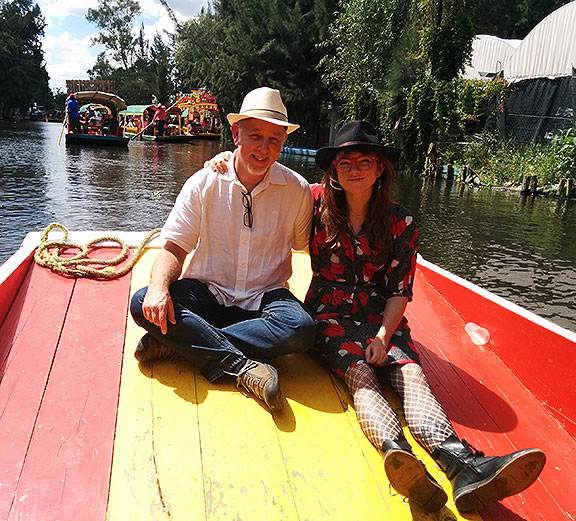 Even my daughter came along! 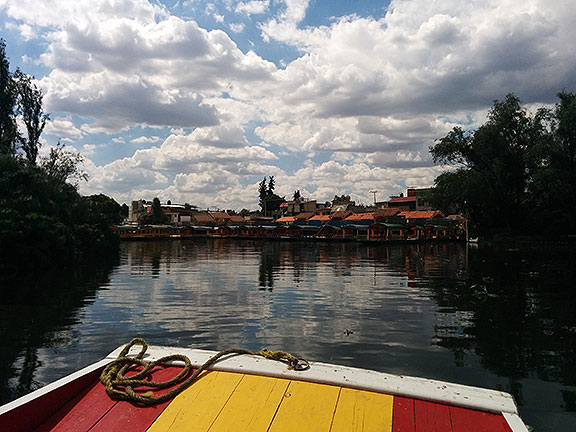 Returning to dock, what a sky!
|
Hidden San Francisco 2nd EDITION!

NEW 2nd EDITION NOW AVAILABLE!
Buy one here
(Pluto Press, Spring 2025)
|






























